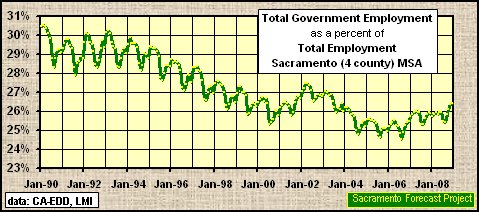
PHOTO ILLUSTRATION BY FIVETHIRTYEIGHT / GETTY IMAGES
The 2022 election for the House of Representatives was so close that if any number of things had gone differently, Democrats might have kept their majority. And one of the biggest things that affected the battle for the House was redistricting — the decennial redrawing of congressional districts’ lines to account for the results of the 2020 census.
But was the impact of redistricting significant enough to swing the House to the GOP? As I wrote in June, the 2021-22 redistricting cycle didn’t radically change the partisanship of the national House map, so I mostly agree with those who say redistricting didn’t cost Democrats the House. But at the same time, those who say Republicans won only because they gerrymandered are also technically correct. How can both things be true? Allow me to explain.
One way to test the claim that “redistricting cost Democrats the House” is to assess whether Democrats would have held onto the chamber if redistricting had never happened. We at FiveThirtyEight have already calculated how many percentage points each district swung left or right thanks to redistricting. For example, a district that went from a partisan lean of R+2 to D+3 got 5 points bluer. Then I compared this swing to the current 2022 House margin in that district. Suppose a party lost by less than the district swung away from that party in redistricting. In that case, it’s likely that redistricting cost that party the seat.
Of course, this is a hypothetical — and imperfect — exercise. Some districts changed substantially and wouldn’t have swung uniformly like that had they not been redrawn. In addition, if they had not changed, different districts might have attracted different candidates and different levels of spending from national groups, each of which could have affected the result. But this method can still give us a rough idea of what might have happened in a redistricting-less world.
Using this method, we can see that Republicans flipped a net six seats because of redistricting.

Republicans flipped three seats in Florida alone thanks to the extremely GOP-friendly map pushed through by Gov. Ron DeSantis. They also used their control over the Georgia and Tennessee redistricting processes to convert the Democratic-held Georgia 6th and Tennessee 5th into safely red seats.
But Democrats also caught a few bad breaks in states with ostensibly nonpartisan redistricting processes. For example, the Arizona Independent Redistricting Commission made the 2nd and 6th districts about 10 points more Republican-leaning. In Michigan, the state’s Independent Citizens Redistricting Commission redrew the 10th District to be light red. And court-appointed experts nudged the New York 17th and Virginia 2nd rightward enough that they flipped too. Meanwhile, Democrats on the New Jersey Congressional Redistricting Commission voluntarily sacrificed the 7th District to protect vulnerable Democrats in other districts.
On the other hand, Democrats flipped a few seats thanks to redistricting. They drew some very Democrat-friendly maps in Illinois and New Mexico, enabling them to pick up the Illinois 13th and New Mexico 2nd. A court reconfigured North Carolina’s 13th District from a solidly red seat into a swing district that Democrats narrowly carried. And Republicans made the Ohio 1st District and Texas 34th District bluer, with the unfortunate (for them) side effect of handing those seats to Democrats.
But we also need to consider seats that didn’t flip but would have if redistricting had not occurred. And this is where Democrats benefited the most, gaining six seats on net — and canceling out Republicans’ gains from the flips that did occur.

Democrats drew maps that likely allowed them to avoid losing the Illinois 14th, Illinois 17th, Nevada 3rd, Nevada 4th and Oregon 4th. They also held onto the New Jersey 3rd thanks partly to their sacrifice of the 7th District. Meanwhile, court-ordered maps probably kept the New York 18th and Virginia 7th in the Democrats’ column. And Democrats may even have DeSantis to thank for them holding Florida’s 9th District: The district got 12 points bluer in redistricting.
Meanwhile, Republicans redrew Nebraska’s 2nd District to be a tad redder, which may have saved their Bacon. The court-ordered map in New York also may have enabled Republicans to hold onto the New York 22nd. And Rep. Lauren Boebert probably would have lost without the Colorado Independent Congressional Redistricting Commission making the Colorado 3rd a bit redder.
Democrats also gained a net three seats from reapportionment, the process of subtracting congressional districts from states with sluggish population growth and giving them to states whose populations have exploded. Six of the seven districts that were eliminated by reapportionment were held by Republicans — slow-growth areas tended to be in rural and/or postindustrial areas, where Republicans usually dominate. But Republicans won only three of the seven districts that were created in reapportionment, for a net Democratic gain of three seats.
Democrats gained House seats from reapportionment
Which party held or will hold the congressional districts eliminated and created by 2021 reapportionment, or the process of redistributing districts between states according to the results of the decennial U.S. census
| Old District No. | Incumbent Party | New District No. | Winning Party | |
|---|---|---|---|---|
| CA-47 | D | CO-08 | D | |
| IL-18 | R | FL-15 | R | |
| MI-02 | R | MT-01 | R | |
| NY-22 | R | NC-14 | D | |
| OH-16 | R | OR-06 | D | |
| PA-12 | R | TX-35 | D | |
| WV-01 | R | TX-38 | R |
By my reckoning, Democrats actually gained three seats from redistricting overall. In other words, without redistricting, Republicans’ majority would be closer to 225-210.
“But wait,” I hear you saying. “There was no world in which redistricting wouldn’t have occurred in 2021-22. So isn’t it better to calculate how the 2022 election would have gone down if redistricting had gone differently, not if it hadn’t happened at all?” You have a point — but the problem is, there is no objective alternative map. The congressional map could have changed in a thousand ways depending on individual, state-level decisions.
Still, let’s engage in a few of the most commonly cited what-ifs.
Over the past year and a half, Democrats have filed several lawsuits against Republican-drawn congressional maps, arguing that they are illegal partisan or racial gerrymanders. Some of these were successful, like in North Carolina. But most weren’t resolved in time to prevent the Republican-drawn maps from being used in 2022.
But what if they had been? Specifically, let’s pose a set of hypotheticals:
In this world, Democrats probably would have won five more seats than they actually did.

This doesn’t even account for other lawsuits that voting-rights advocates filed in states like Georgia, South Carolina and Texas. There, we don’t have good alternative fair maps to compare with, but it’s safe to say that if the courts had ruled in Democrats’ favor, Democrats would have won a few more extra seats too. Regardless, five additional seats for Democrats would have been enough for them to hold onto a slim 218-217 majority. So yes, if every Republican gerrymander had been undone in court before the 2022 election, Democrats may have kept control of the House.
But that’s assuming no additional Democratic gerrymanders were thrown out in court. Republicans also filed suit against several congressional maps that were biased toward Democrats. What if a court had overturned New Mexico’s map and replaced it with this map drawn by the state’s advisory redistricting commission? Republicans would have almost certainly kept control of the state’s 2nd District. Or what if a court had struck down Nevada’s map and imposed a plan closer to the status quo? The GOP very well could have flipped the 3rd or 4th districts there.
The reality is, it’s impossible to say whether Democrats would have won the House in a world where no state was gerrymandered. The definition of a “fair map” is subjective, and there’s uncertainty about what type of map a court might have imposed in states like Nevada or Texas. The one thing we do know is that it would have been close.
But let’s also not lose sight of the bigger picture. Votes are still being counted in some states, but it looks like Republicans won the national popular vote for the House by about 3 points. The national congressional map used in the 2022 election may not have been fair, but a map that gave Democrats the majority despite losing the popular vote definitely wouldn’t have been. So it’s somewhat beside the point whether redistricting cost Democrats the House: Republicans won the most votes, so the most democratic (lower-case “d”) outcome prevailed.









More Stories
The Economy is Doing Fine, for the Time Being
Cochise County’s Bottom-Up Election-Denial Strategy
Is this how we’ll watch the next World Cup? | Science & Tech News